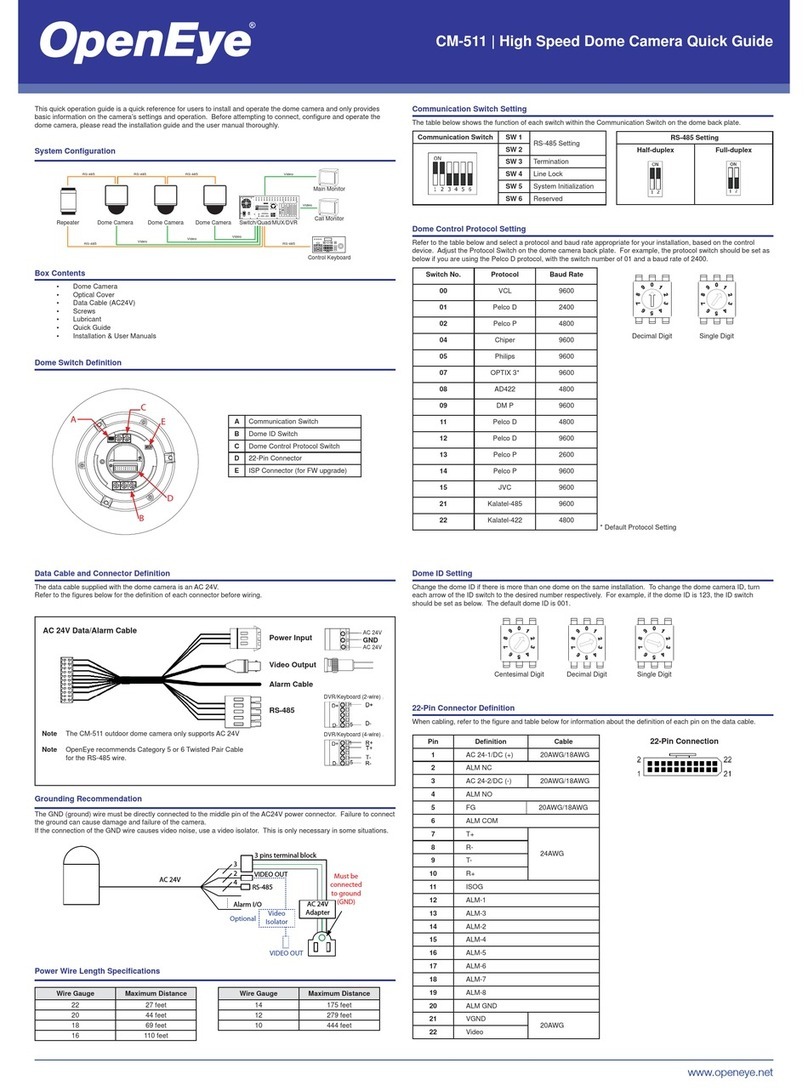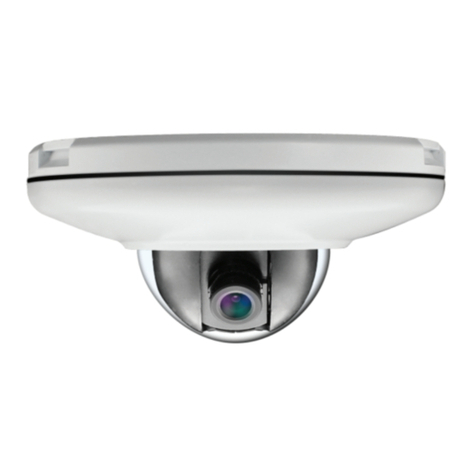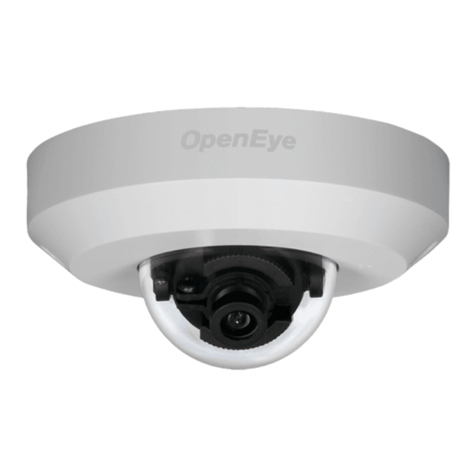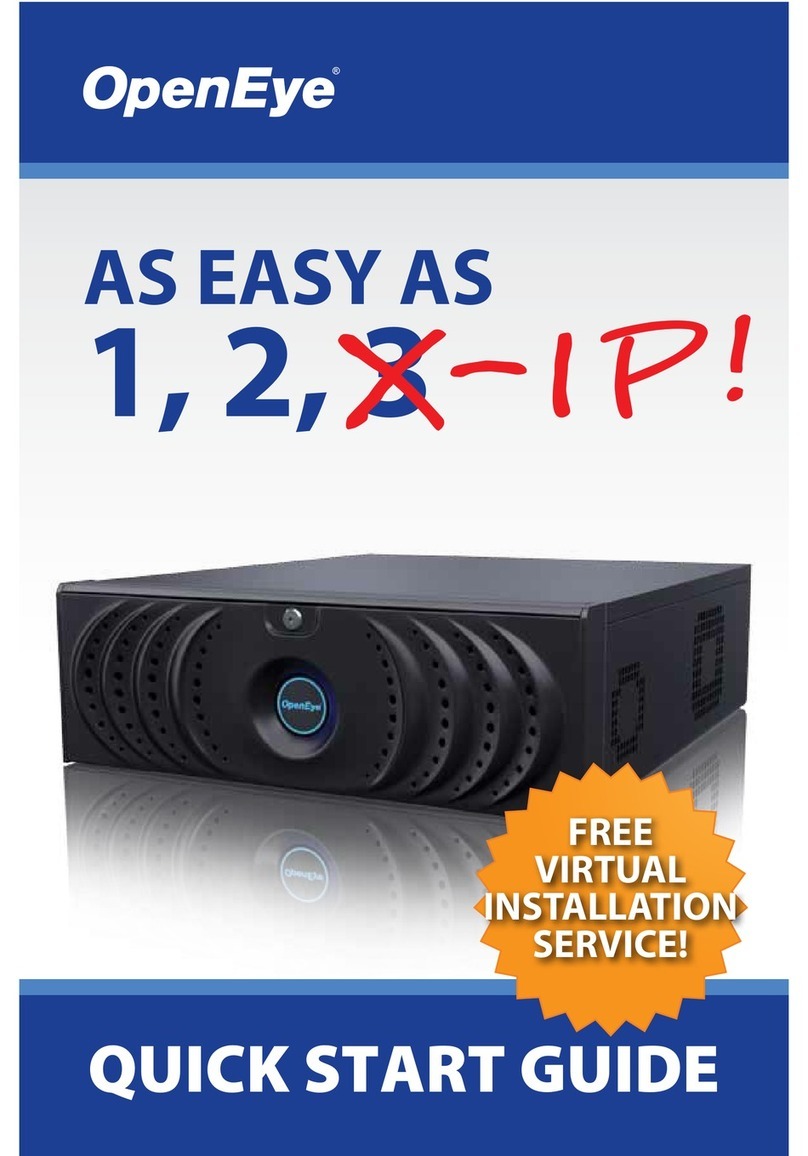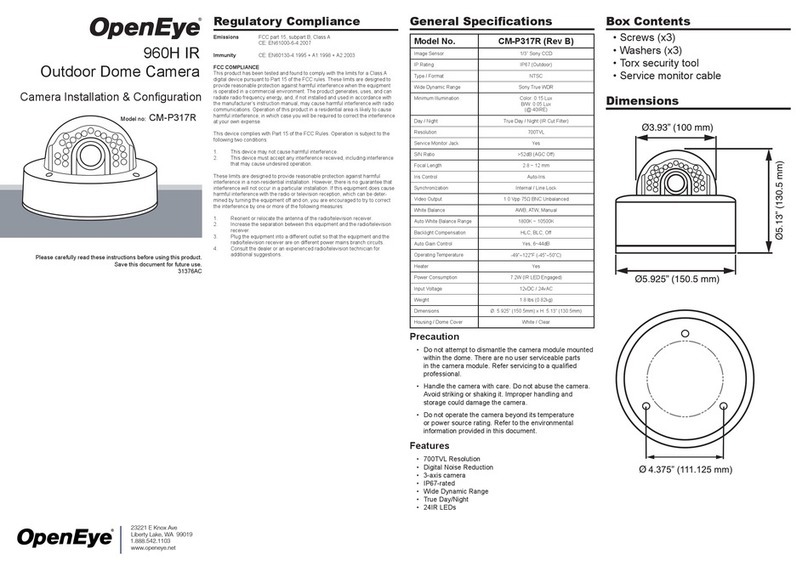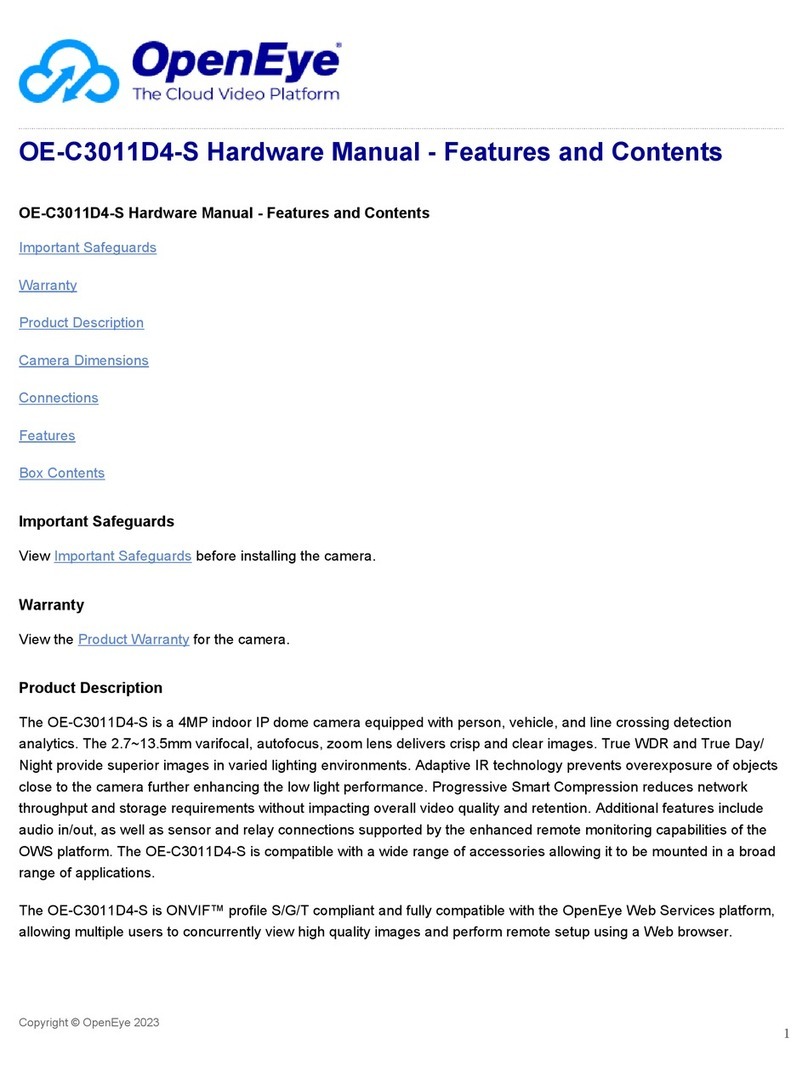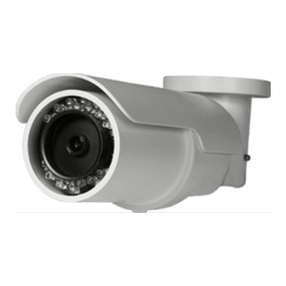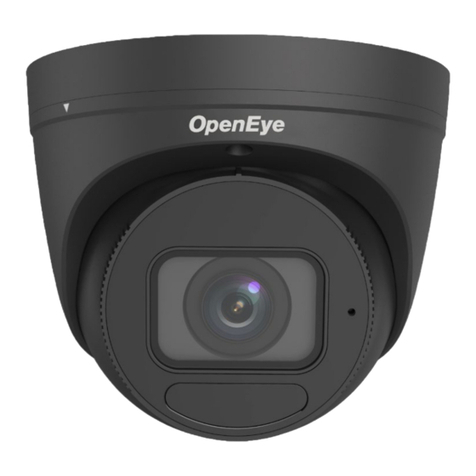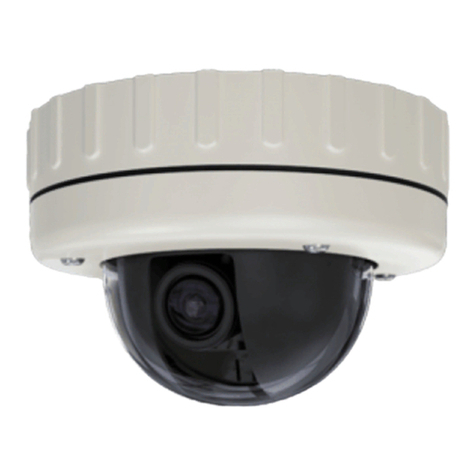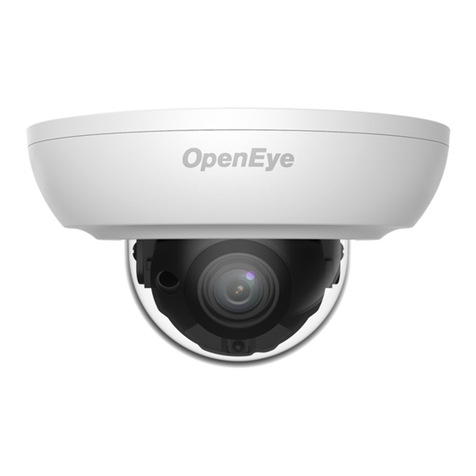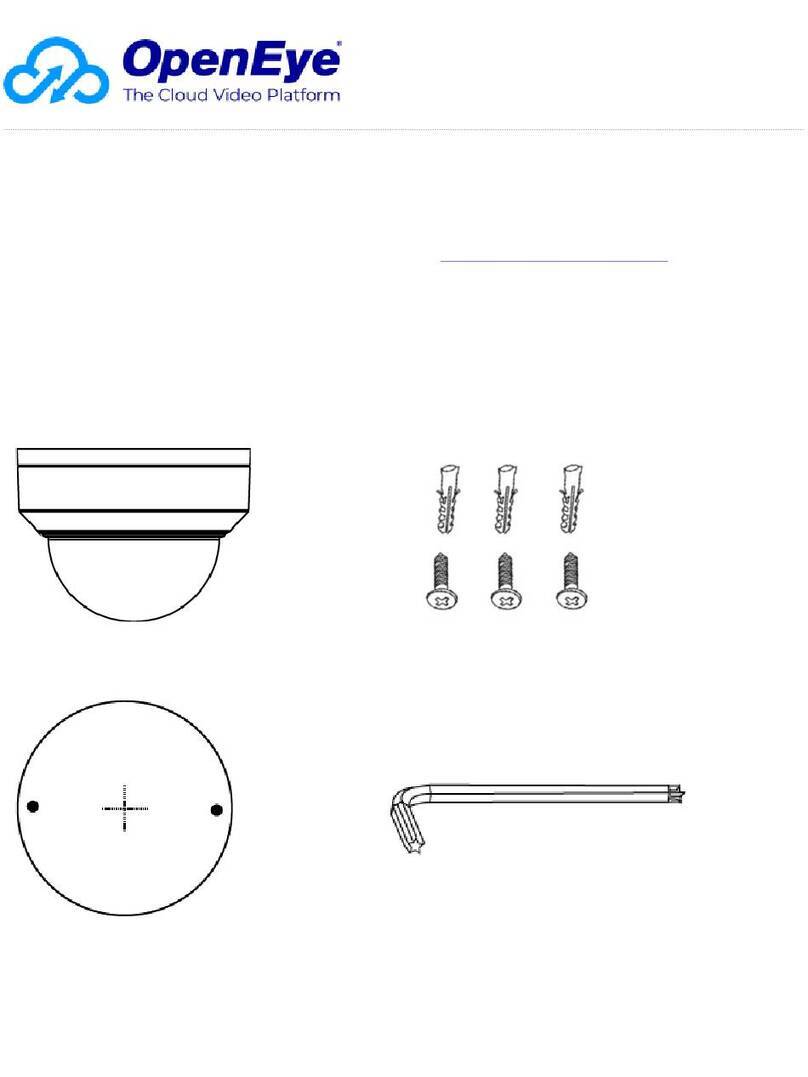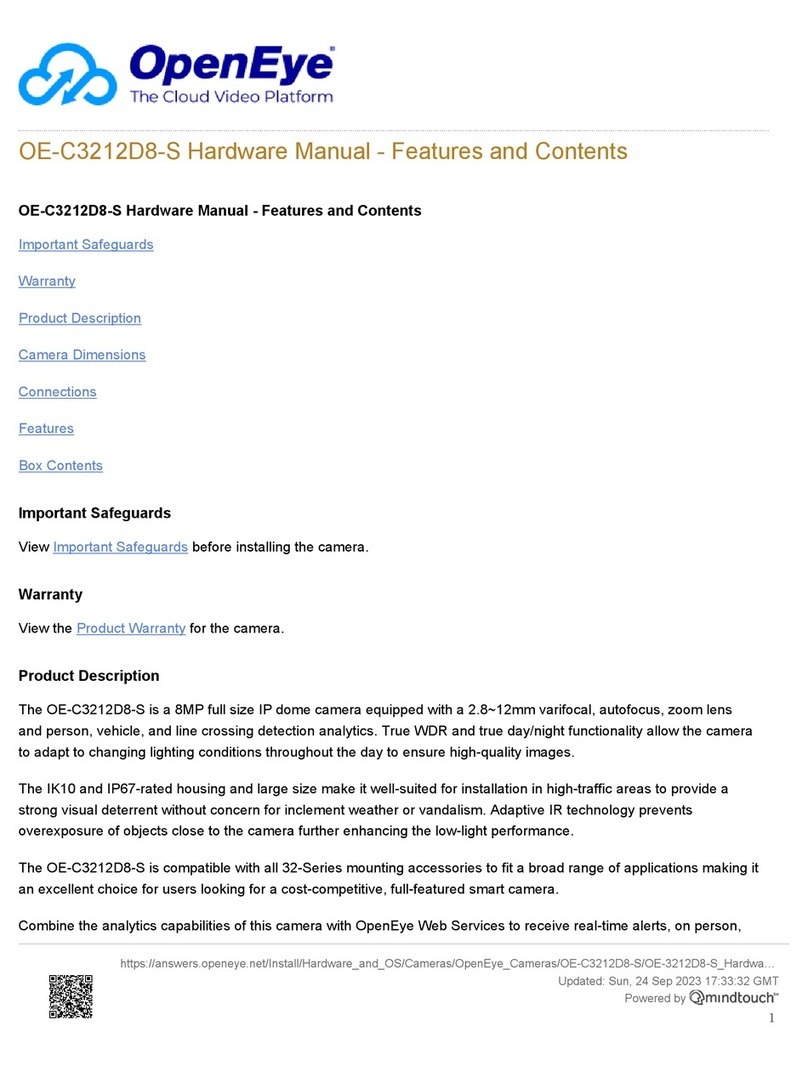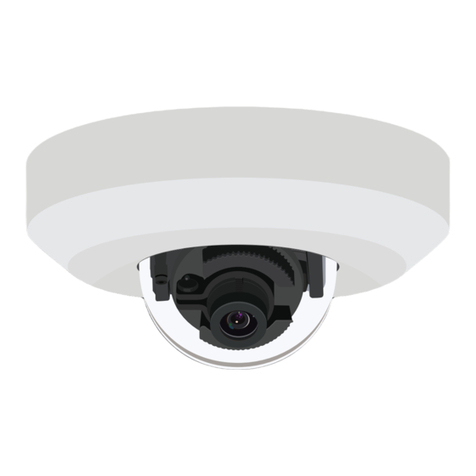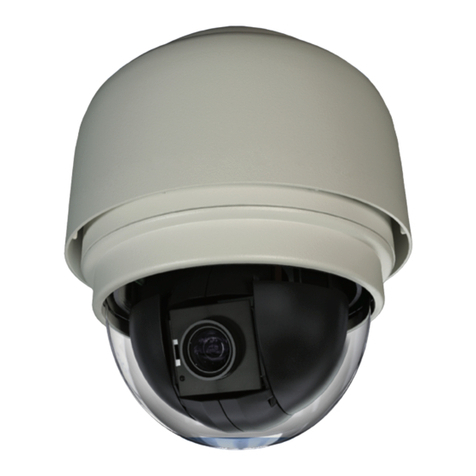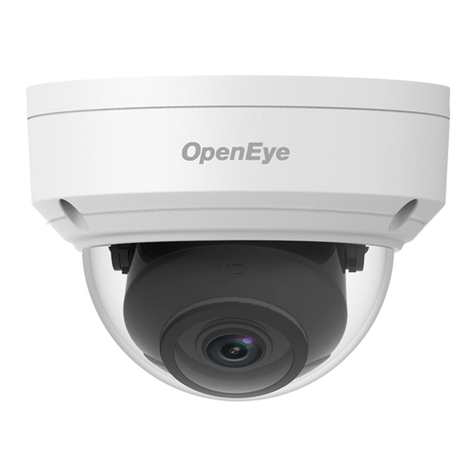Installing the Dome Enclosure
-7-
1
2
3
4
5
Remove the dome cover
Use the supplied Torx driver to loosen, if required, (but not remove) the four cover
screws. The screws are captive and will be retained in the lid.
Use the template to mark and prepare the mounting area
All mounting access positions are sealed until they are ready to be used. For example
when surface-mounting the housing, first knock-out the screw access holes that
correspond to the template marks “T1”. This can be accomplished by using a Phillips
screwdriver.
Select the desired cable entry
Mount the dome enclosure
Connect the wiring
IMPORTANT: The power supply must be Class 2 certified.
IMPORTANT: If the dome is being mounted externally, use a suitable sealant around
the cable entry hole to ensure a moisture resistant seal.
300 Series Color
Camera Connections
Main camera
connection
Programming port for factory used
OSD
connection
Using one of the mounting schemes discussed in this document (Methods for
mounting the enclosure), mount the dome enclosure (and outer ring, if necessary) in
place. When flush or surface mounting using the outer ring, ensure that the large
rubber gasket (D6) is in place under the lip of the dome enclosure.
Note: When using the outer ring, the two internal ribs of the outer ring must fit into the
slots in the sides of the dome enclosure, adjacent to the two locking arms (which must
be retracted).
IMPORTANT: If the dome is being mounted externally using the four base holes, use
the supplied rubber o-rings in each of the four mounting holes of the dome base to
ensure a moisture resistant seal (see fig C).
Feed the preconnected main leads (that terminate at
connections E1 and E2) through the cable access and
connect it to your video out and power in cables. A
wire-ended adapter lead (E7) is supplied for use with
power supply cables that are not terminated with an
appropriate power connector.
For 12VDC operation: Connect the red lead to the
positive supply and the black lead to the negative
supply. For 24VAC connection, polarity is not
important.
Use either the base cable entry (D1) or side cable entry (D3) as necessary. When
surface mounting and using the side cable entry (D3), open either the large (D4) or
small (D5) knock-out within the outer ring to the desired size by cutting away excess
material with a hole cutter, sharp knife, or side cutters. The outer ring can be rotated
so either of the knock-outs align with the side cable entry, as necessary. Unused
cable entries should be secured with sealing plugs (D8).
Note: Route cables through the supplied slotted rubber grommets (D9) to prevent dust
infiltration.
